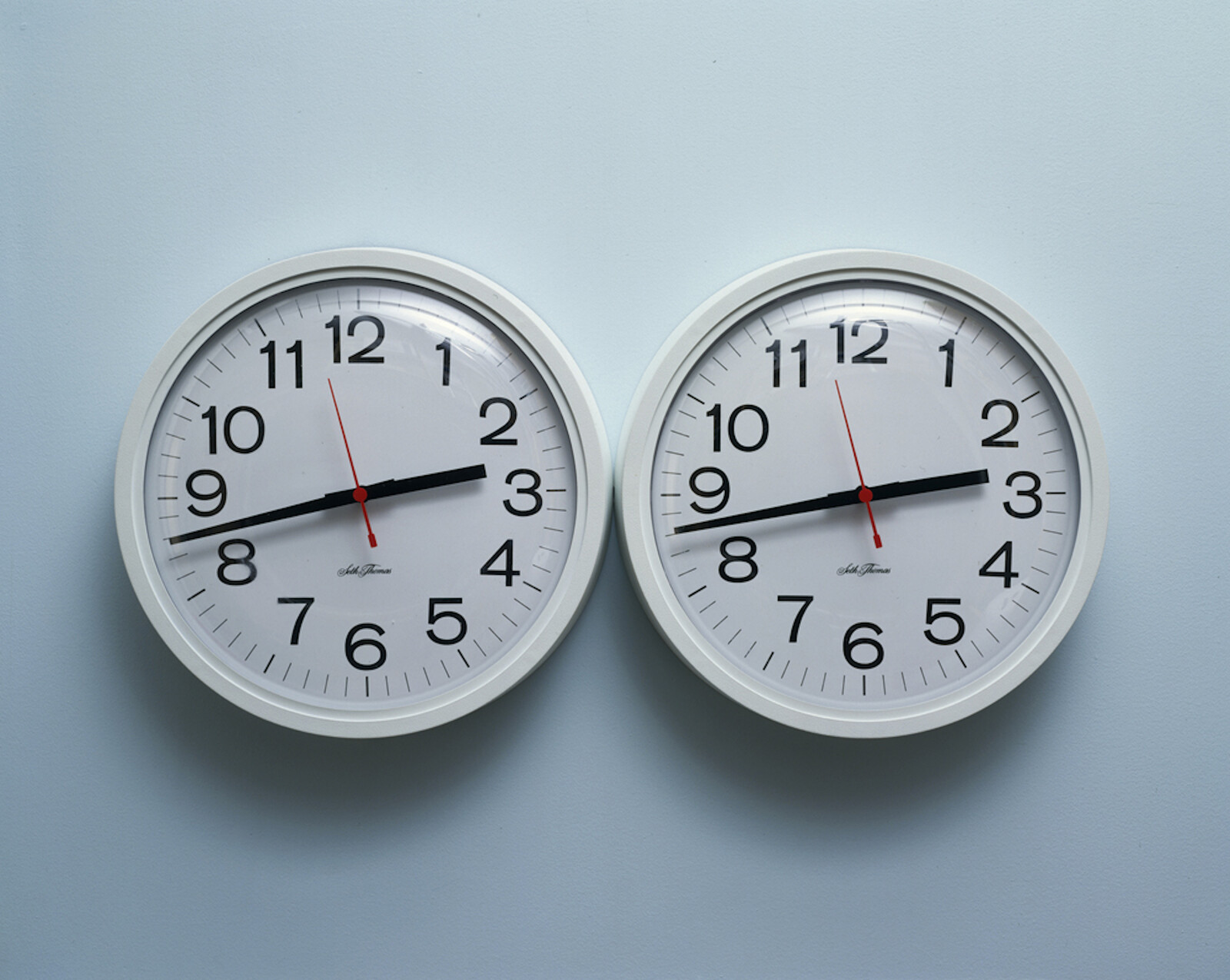The Rearview series addresses blind spots in contemporary art criticism by drawing readers’ attention to an influential text from the past and reflecting on its implications in the present. In this edition, Kevin Brazil introduces an essay by Boris Groys first published in e-flux journal.
I was no comrade in time of Boris Groys’s “Comrades of Time.” I read it in 2014, five years after it was published. And I came to it, as I came to the art world from which it speaks, indirectly. I had just finished a PhD, which became a book, on the ways some twentieth-century novelists thought about art. Art was always something I approached at one remove, or at least that was how I justified never being up to date with the latest theory. One of the many tools Groys’s essay gave to me was a way out of that very feeling: that “art” is something which develops or progresses towards a future, and that if I miss a show, fail to read a catalogue, or don’t know an artist, I’ve fallen behind. Here is one gift this essay offers: you can never be late for art.
Groys argues that when we see art as something with a future, as something that must always be new, we are imposing upon art the task of modernism: “Classical modernity believed in the ability of the future to realize the promises of past and present.” Or, in the less abstract Soviet slogan: “Time, forward!” But the problem with this approach to time, Groys points out, is that it prevents us from experiencing the present. The present, in this formulation, is just something we have to get through as fast as possible on the way to the future. Both the moment of being present in front of a work of art, and the historical present from which that work speaks, are viewed aslant, with one eye on the horizon. Another gift, then: the strange revelation that you might never have really seen all those classics of modernist art, their modernity always forcing you to look just beyond them at what might be coming next.
For Groys, “ours is a time in which we reconsider—not abandon, not reject, but analyze and reconsider—the modern projects.” But hasn’t art been doing that since the 1960s? Since Conceptualism collapsed art into its theory, since photographers like Cindy Sherman dissolved the modern subject into its representations, since institutions like the Havana Biennial reminded us of those who were always excluded from the modern project? But note the dispositions of Groys’s essay towards modernity: reconsideration, doubt, boredom, hesitation. Humble, minor moods. Some of the first great reassessments of modernity in critical theory—among them works by Jean-François Lyotard and Fredric Jameson—were apocalyptic: postmodernism was ruin, collapse, and the end of history itself. But when it became clear that history had not, in fact, ended with the beginning of the new millennium, an equally absolute disposition towards modernity began to dominate art-theoretical discourse. Modernity wasn’t over—it was multiplying, it was everything. Okwui Enwezor, whose curatorial projects were among the most influential of the first decade of the twenty-first century, approached art with the assumption that there “isn’t one singular framework of modernity, or modernism, for that matter.” 1 Nicolas Bourriaud, whose activity in the years was just as prominent and a lot less helpful, ended the decade by hailing an era of “altermodernism” in the 2009 Tate Triennial which showed how exhausted, unrigorous, and nostalgic the discourse of multiple modernities had become.
As it was in art, so it was in literature. During the early 2010s, it seemed that every writer of note who deviated from the New York Times realism of, say, Ian McEwan or Donna Tartt was hailed as modernist: Tom McCarthy, Zadie Smith, Ben Lerner, Claire-Louise Bennett. In studying the kind of art that preoccupied novelists like Samuel Beckett or W. G. Sebald, I spent years fixating on their fixations, which, for better or worse, remained the modernist ruptures of abstraction or the readymade. When I was done, and wondering how to relate to contemporary art that escaped this obsession with modernity, Groys gave me the conceptual framework I needed. And judging by the extensive theorization of “the contemporary” in art criticism that his essay in part initiated, that framework was needed by many.
The last and most important gift this essay offers is the particular way it makes works of art our own comrades in time. For Groys, the temporal conditions of hesitation and boredom that enable us to rethink the nature of our historical present are provided by encounters with individual works. The aimless repetitions and hesitating reveals in the art of Francis Alÿs enact, in microcosm, the experience of our own contemporaneity, wherein “we are stuck in the present as it reproduces itself without leading to any future” and “[w]e simply lose our time, without being able to invest it securely, to accumulate it, whether utopically or heterotopically.” This was how the concept of modernity originated: it was from examining fashion in now-forgotten painters that Baudelaire discovered that “Modernity is the transient, the fleeting, the contingent; it is one half of art, the other being the—eternal and the immovable.” “Comrades of Time” gave a theorization of the past decade. But it also showed us that art can tell us where and when we will be in the very different decade now beginning.
Read the essay in e-flux journal:
“Comrades of Time” by Boris Groys
Carol Becker and Okwui Enwezor, “A Conversation with Okwui Enwezor,” Art Journal, vol. 61, no. 2 (Summer 2002): 20.
